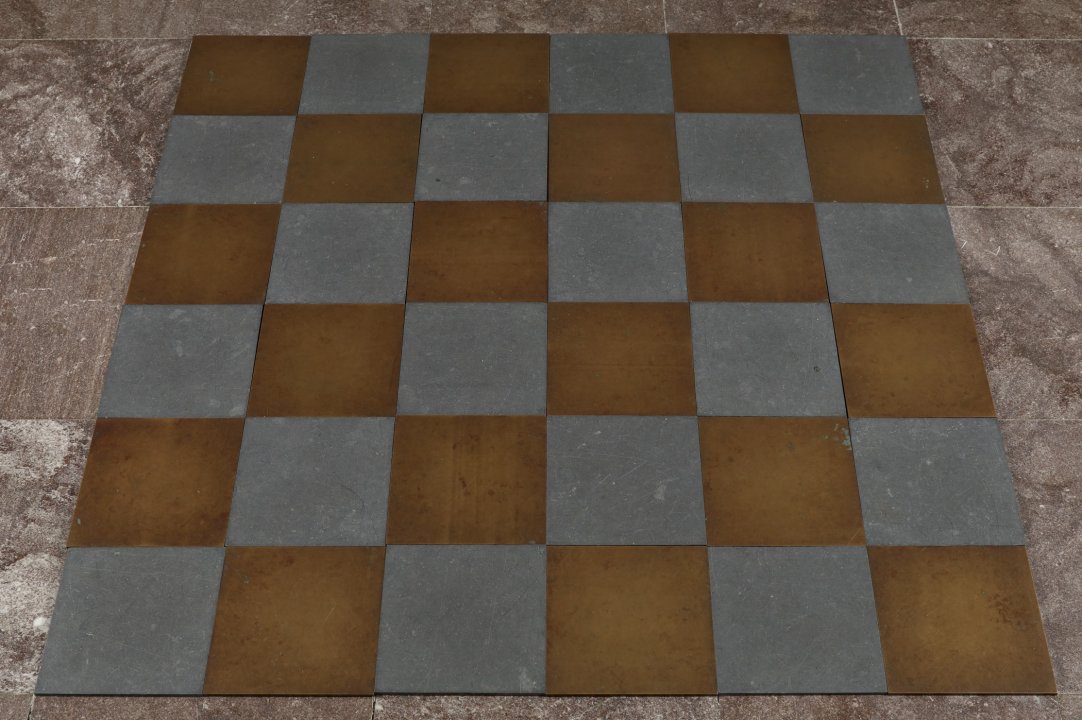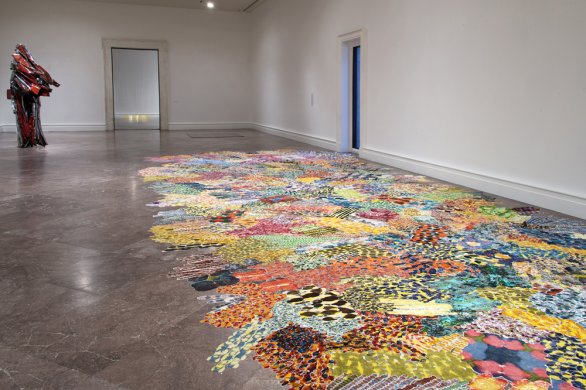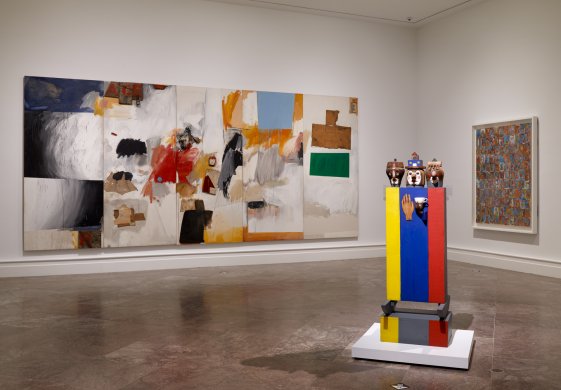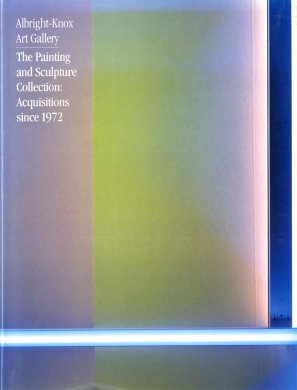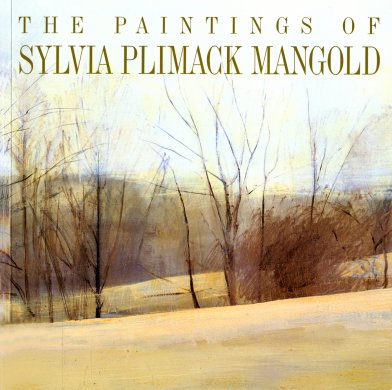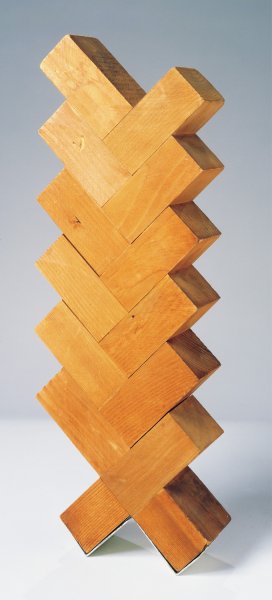Carl Andre
American, 1935-2024
Lead-Copper Plain, 1969
Artwork Details
Materials
copper and lead
Measurements
overall: 3/8 x 72 x 72 inches (.95 x 182.88 x 182.88 cm)
Collection Buffalo AKG Art Museum
Credit
Charles Clifton Fund, 1972
Accession ID
1972:15
During the early 1960s, Carl Andre made a living working on the Pennsylvania Railroad. His daily exposure to the endless miles of track and repetitive lines of freight cars heightened his awareness of the relationship between objects and their surroundings. This became a central idea in Andre’s approach to artmaking and his designation of “sculpture as form, sculpture as structure, sculpture as place.” Lead-Copper Plain is one in a series of works the artist referred to as “plains”—which further emphasizes their function as discrete places and evokes visions of a flat, sweeping landmass. It comprises thirty-six twelve-inch-square copper and lead tiles arranged in a checkerboard pattern and held in place only by gravity. Andre maintains that it is possible to sense the differing mass of the metals and hear the contrasting sounds they make underfoot. Viewers are invited to test Andre’s theories by gently walking on this work.
Label from Giant Steps: Artists and the 1960s, June 30–December 30, 2018
